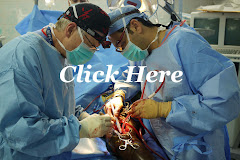The risk of HIV transmission is a commonly expressed concern for volunteers. I've even heard of a potential volunteer query as to what the hospital "evacuation plan" would be in the case of a needle stick. The short answer is, don't expect to be airlifted back home. However, my understanding is that the hospital will provide enough post exposure medication, currently the 2-drug protocol Truvada and Kaletra, until the volunteer returns home where he/she is responsible for obtaining the remaining medication to complete the treatment regimen.
The immediate use of antiretroviral drugs to prevent HIV sero conversion after exposure to potentially HIV-infected blood or body fluids is called Post-Exposure Prophylaxis (HIV-PEP).
The immediate use of antiretroviral drugs to prevent HIV sero conversion after exposure to potentially HIV-infected blood or body fluids is called Post-Exposure Prophylaxis (HIV-PEP).
Since HIV-PEP is not 100% effective, the importance of primary prevention must be reinforced and everyone working in the OR and on the wards must pay meticulous attention to proper management and disposal of sharps.
If you experience a needlestick or sharps injury or were exposed to the blood or other body fluid of a patient during the course of your work at HAH, immediately follow these steps:
- Wash needlesticks and cuts with soap and water
- Flush splashes to the nose, mouth, or skin with water
- Irrigate eyes with clean water, saline, or sterile irrigants
- Report the incident to the Director of Nursing or Medical Director
- Draw blood for HIV testing from patient if they can be identified
So the bottom line is that there is nothing to bring with respect to HIV prophylaxis but use standard precautionary practice (same as you would back home) to avoid exposure.








No comments:
Post a Comment